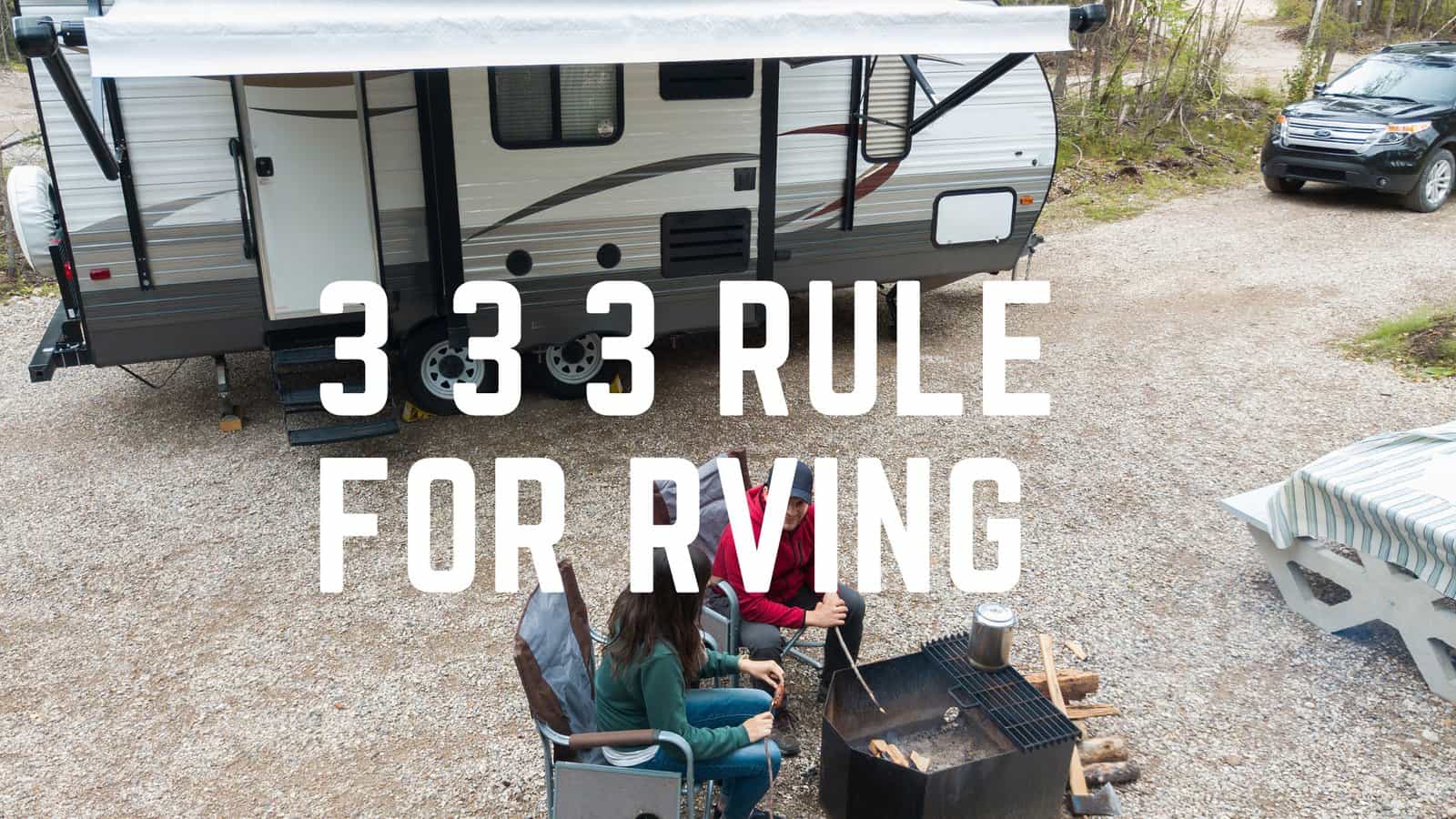Ready to take the open road by storm and indulge in the ultimate freedom of an RV adventure? Great! But before you shift into gear, it’s essential to be aware of the 3 3 3 rule for RVing. This simple, yet effective rule can significantly improve your RV travel experience. Let’s dive in and demystify what it’s all about.
1. What is the 3 3 3 Rule?
The 3 3 3 rule is a general guideline popular among RVing enthusiasts. It stands for driving no more than 300 miles or 3 PM, whichever comes first, and staying at least 3 nights at each stop. The main goal? To maximize the enjoyment of your travel while minimizing fatigue and rush.
2. Understanding the 3 3 3 Rule in Detail
i. 300 Miles or 3 PM
A cardinal rule among seasoned RV travelers is to avoid excessive driving in a single day. Long hours on the road can lead to fatigue and increase the risk of accidents. That’s where the first “3” comes in:
Limit your drive to either 300 miles or until 3 PM.
This not only ensures you stay fresh but also gives you ample time to set up camp, explore the surroundings, or simply unwind before nightfall.
ii. Stay for 3 Nights
The next “3” in the 3 3 3 rule represents the number of nights you should stay at each location:
Spend at least 3 nights at each stop.
RVing is about more than just reaching a destination; it’s about savoring the journey. By spending at least three nights, you allow yourself enough time to soak in the local vibes, discover hidden gems, and truly experience the place. Plus, it gives you a well-deserved rest from the drive.
Check out our article on: Making Your Travel Trailer More Eco-Friendly: A Comprehensive Guide
3. Benefits of the 3 3 3 Rule
Following the 3 3 3 rule for RVing offers several benefits:
- Reduced Fatigue: By limiting the travel distance and time, you prevent exhaustion and increase overall safety.
- Enhanced Experience: Staying longer in one place allows you to deeply explore and appreciate the location.
- Less Stress: This rule provides ample time to set up, break down, and maintain your RV, thereby reducing the potential for stress.
- Flexibility: If something unforeseen happens, like a mechanical issue, you’ll have extra time to address it without jeopardizing your travel plans.
4. The 3 3 3 Rule: An Illustrative Example
To help you understand the 3 3 3 rule for RVing better, here’s a quick example:
John and Mary plan to RV from Los Angeles to Yellowstone National Park, a distance of approximately 900 miles. Instead of driving this in one or two grueling days, they decide to follow the 3 3 3 rule.
They travel a maximum of 300 miles each day, stopping no later than 3 PM. So, they spread their journey over three days, stopping at interesting locales along the way. At each stop, they stay for at least three nights, exploring local attractions and resting before the next leg of their journey.
This approach transforms what could have been a stressful, tiring drive into a relaxed, enjoyable journey, full of rich experiences and memories.
5. Thoughts On The 3 3 3 Rule
The 3 3 3 rule is not a strict law, but a flexible guideline. Some days you might drive less, some days more.
You may stay for a shorter or longer duration at a particular location based on your preferences. The key takeaway from the rule is to avoid rushing, reduce stress, and truly relish the RVing experience.
The essence of RV travel is to enjoy the journey as much as the destination. By following the 3 3 3 rule, you’ll have the chance to explore off-the-beaten-path locations, connect with nature, meet interesting locals, and create unforgettable memories.
6. Other RVing Tips
While the 3 3 3 rule forms a solid foundation, here are some additional tips to enhance your RVing experience:
- Plan Your Route and Stops: Use tools like RV Trip Wizard to plan your route, including stops, based on your interests and travel pace.
- Reserve Your Campsites in Advance: Especially during peak seasons, campgrounds can fill up quickly. Reserving your spots in advance will ensure a stress-free journey.
- Perform Regular RV Maintenance: Regular check-ups and maintenance of your RV will keep it in top shape, reducing the risk of unforeseen breakdowns.
- Stay Flexible: While it’s important to have a plan, staying flexible and open to changes is equally vital in RV travel.
7. Conclusion
The 3 3 3 rule for RVing is an excellent guideline for anyone embarking on an RV journey, whether a newbie or a seasoned traveler. It fosters a relaxed travel pace, minimizing fatigue and maximizing enjoyment. So, the next time you’re planning an RV adventure, give the 3 3 3 rule a shot. You might just find it’s the missing ingredient for the perfect RV experience!
Happy travels and enjoy every mile of your journey!
Please, feel free to share your experiences or questions about the 3 3 3 rule in the comments section below.
Good luck, and happy camping!
Check out our article on: Best Weight Distribution Hitch For (Safe Proper Towing)

